There are many reasons why trousers need to be altered - they don't fit perfectly, they are too big or too small, they are too wide, etc. Many people wonder how to take in trousers themselves so as not to seek help from a tailor at a studio. Below we will look at the most common options for adjusting items to fit your figure.
- How to sew it yourself
- Reduce the sides and waist of trousers
- Adjustment only on the sides
- Waist reduction without a sewing machine
- Sewing in the waistband of trousers with elastic
- Sewing sweatpants to size
- How to remove excess along the middle seam
- Sewing along the inner seam
- The nuances of working with classic trousers
- How to Taper Women's Trousers
- Sewing with darts
- Sewing in flared trousers
- How to make jeans narrower
- When is it better to re-cut?
How to sew it yourself
The ability to alter things and model clothes yourself is a valuable skill for a modern person. Taking in trousers is not very difficult and you can cope with the task at home, but for this it is important to know a few nuances.
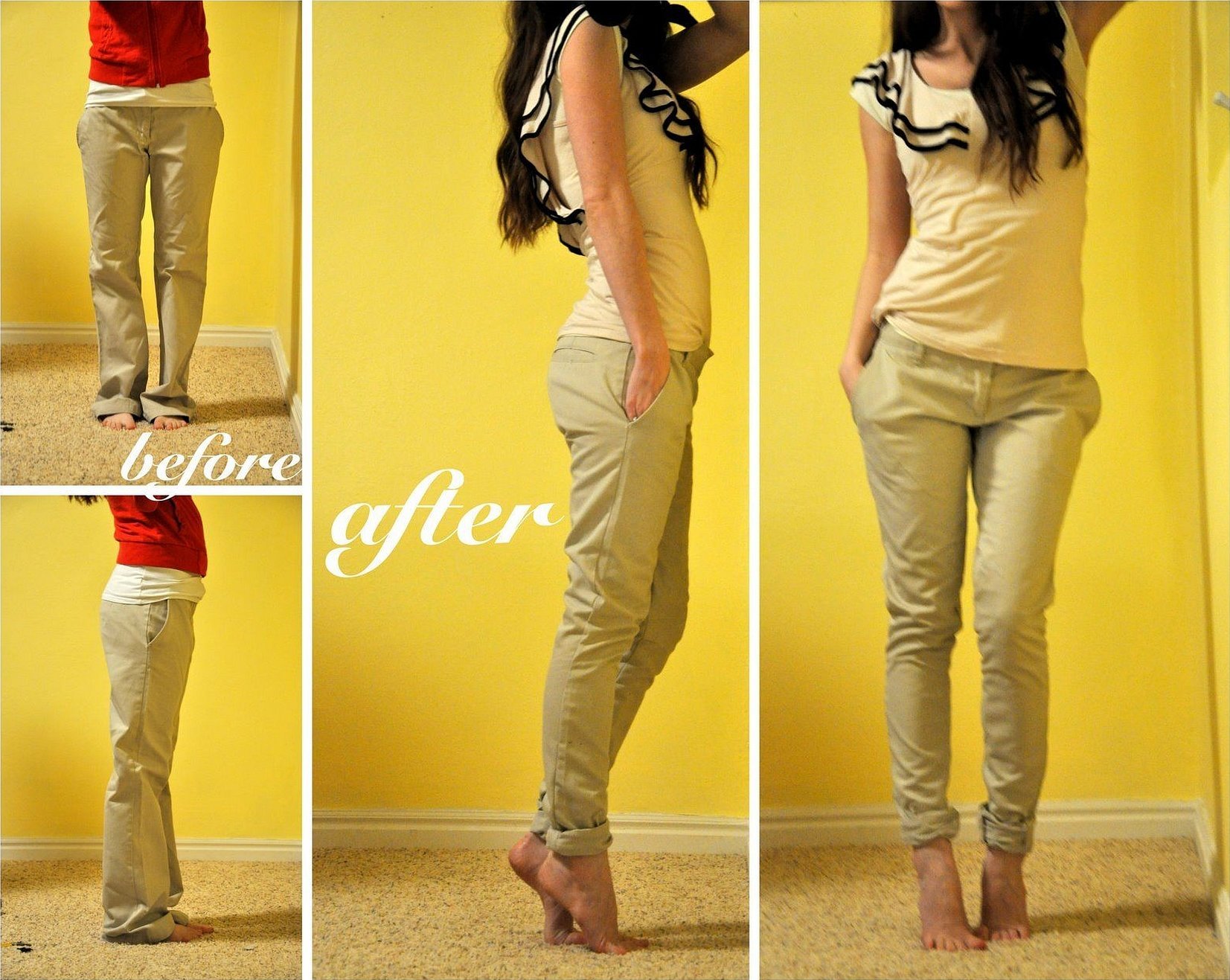
Reduce the sides and waist of trousers
If you need to reduce the trousers by literally 1-2 sizes, you do not need to re-cut them. It is enough to simply take in the product along the inner seams, capturing 0.5 - 1.5 cm on each side. This option is only suitable if the trousers generally fit well on the figure, but require minor adjustments.
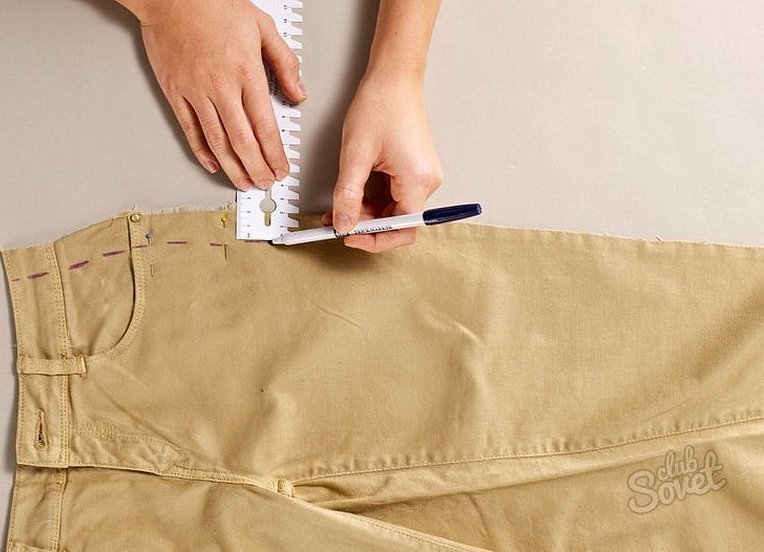
To sew in a garment correctly, you first need to take measurements and try them on your figure. The easiest way is to mark the desired width on the sides, make marks with chalk or thread and stitch.
Please note! This method is not suitable if you need to reduce the pants by more than 3 sizes. Then you need to re-cut them, that is, rip them apart and sew them again.
Adjustment only on the sides
When the pants fit perfectly at the waist, but are a little big at the hips and legs, they can be sewn in only at the sides, without folding the waistband. To do this, you need to put the product on yourself and determine where to start narrowing. In order not to miss (especially for beginners), it is recommended to first baste the pants, try them on, and then sew them in on the machine.
Algorithm of actions:
- Try on the trousers and determine the sewn-in width. For convenience, you can mark it with chalk or a needle and thread.
- Place the product on a flat surface; if you don’t have a large table at home, you can place it on the floor.
- Using a tape measure or ruler, measure the same distance from the outer seam along the entire length of the galosh.
- Next, try it on, and if everything fits, then stitch, cut off the excess and process the edge.
- It is important to iron the new seam at the end so that there are no folds, especially if these are classic trousers and not stretch or denim.
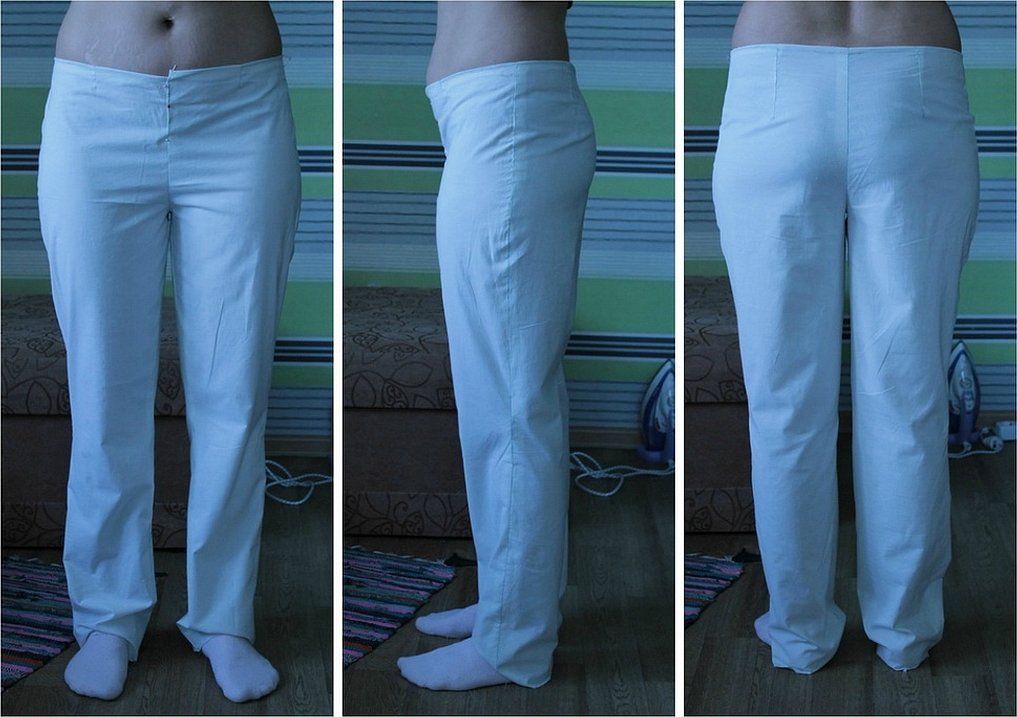
Waist reduction without a sewing machine
Jeans fit perfectly on the hips, butt and legs, but stick out a little at the waist? - This is not a problem, it can be solved quickly, even without using a sewing machine. If you need to remove a few centimeters on the waistband of jeans, then a wide elastic band will come to the rescue. You need to cut off about 7 cm of elastic and sew it inside out on the waistband in the middle at the back, stretching it strongly. When it tightens to its usual position, it will also pull the waistband along with it, which will become a little smaller and will no longer stick out on the figure.
The second option for sewing jeans is darts at the back on the sides. This option is perfect for any model of jeans - women's and men's. You need to carefully rip off the belt, make darts, then cut off the extra centimeters from the belt and sew it back. All this can be done without a machine. The work takes about 2 hours on average.
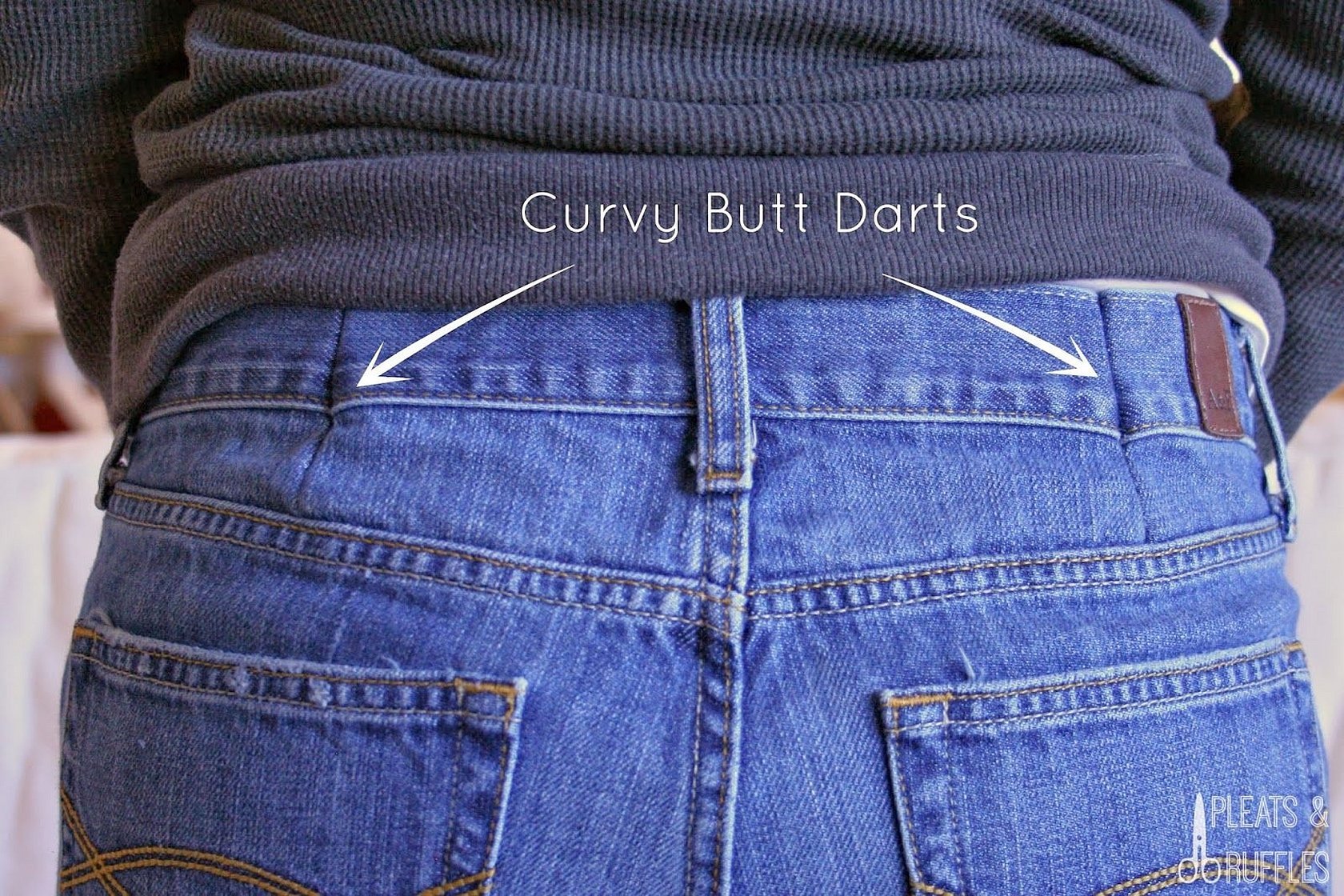
Sewing in the waistband of trousers with elastic
Trousers with elastic bands cause fear in many people if they need to be slightly reduced in size. There is nothing to worry about. First, you need to take out the elastic band and rip off the waistband, and then sew the product in any convenient way:
- side seams (which are on the outside);
- if the belt is sewn in front and back, then it is better to take in the trousers along the middle seam;
- internal seams (professionals call the internal seam a step seam).
Important! You shouldn't sew in pants with elastic using darts, this will only ruin the product.
Regardless of where the item is sewn, the algorithm of actions is practically the same:
- First you need to decide on which side the seam will be sewn in;
- the next step is to rip off the belt;
- then you need to turn the product inside out and secure the excess fabric with pins;
- a new seam is laid, excess fabric is cut off, and the cut area is processed;
- The last step is to sew the belt into place.
At the end, it is important not to forget to iron the new seam.
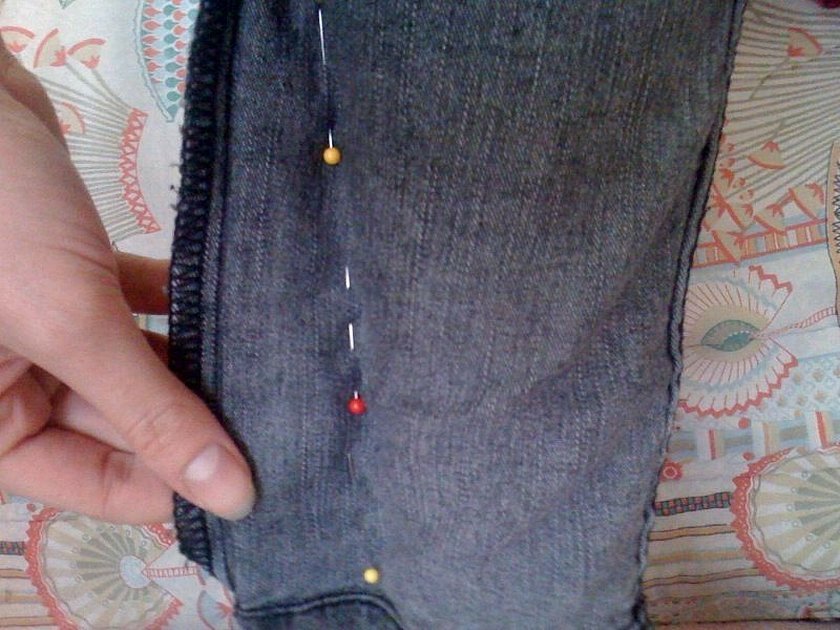
Sewing sweatpants to size
The main feature of sweatpants is the material they are made of. If it is stretch, it tends to crease and is best taken in by a tailor. If it is possible to reduce sweatpants at home, then you can use one of the following methods:
- If the pants fit well on the hips and are not low-waisted, you can take them in along the inner (inseam). To do this, turn the product inside out, mark the desired width with a ruler. It is important that it is the same everywhere, then fix it with needles, lay a basting seam, measure and stitch.
Advice! When sewing a stitch on a machine, you must not stretch the fabric, because this will result in seams with wrinkles and folds that cannot be smoothed out later.
- If you need to take in the pants along the entire length, taking into account the waistband, it is better to do this along the side seams. This way, new seams are laid that will not be noticeable when worn.
If the tracksuit is made of knitwear, then you need to use a thin needle so as not to damage the fabric and cause creases.

How to remove excess along the middle seam
It is allowed to remove no more than 6 cm along the middle seam. If you need more, then it is better to use the method of re-cutting the product. If you ignore this advice, then the item will not sit beautifully and comfortably on the figure, will fall down at the back when squatting and create discomfort when walking due to the deformation of the crotch seam.
So, here are the instructions:
- First of all, as usual, you need to try on the pants and decide how much you want to narrow them.
- Then you need to rip off the belt and divide it in half, so that it will be easier to cut off the excess and sew it back in place.
- Then the product needs to be turned inside out and a new seam needs to be created from the inside out at the back in the middle.
- To make sure the new size is correct, you must first baste, try on, and then machine stitch.
- The belt is attached in place, excess fabric is cut off and all seams are processed to prevent the fabric from fraying.
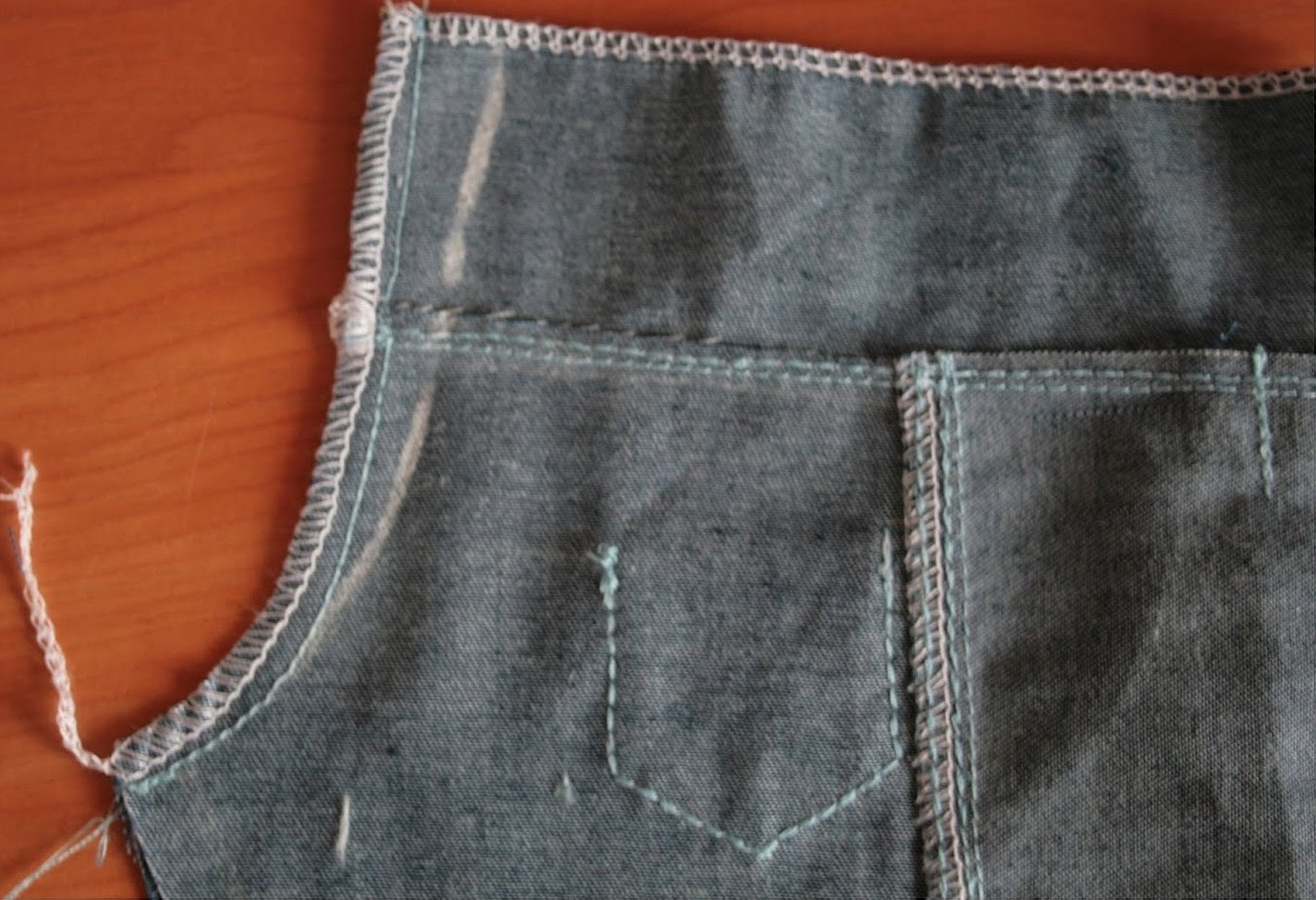
Sewing along the inner seam
The inner seam, also known as the crotch seam, is very easy to sew in. It is important to consider a couple of things:
- the trousers will end up being a little lower;
- you cannot sew in more than 3 centimeters on each side;
- In this way, you can narrow only the galoshes, while the top of the product will remain unchanged.
To take in pants along the inside seam, you need to lay the item out on a hard and flat surface and mark the line of the new seam. It is important to ensure that it is even on all sides.

The nuances of working with classic trousers
Pipes have been in fashion for several years now, instead of classic trousers. However, you shouldn't throw away your favorite trousers, because you can remake them into a trendy item yourself in a few hours. In principle, the sewing patterns for the product are described above, but when remaking classics, there are several secrets that are recommended to use so that the updated trousers fit perfectly:
- It is better to remove the width simultaneously from the outside and from the crotch seam. This way you can achieve an ideal fit and comfortable wearing of the item.
- To ensure that the pants do not restrict movement, it is important to take into account the volume of the leg in the knee area and add a few centimeters for a natural curve.
- The bottom edge should be on average 15 cm.
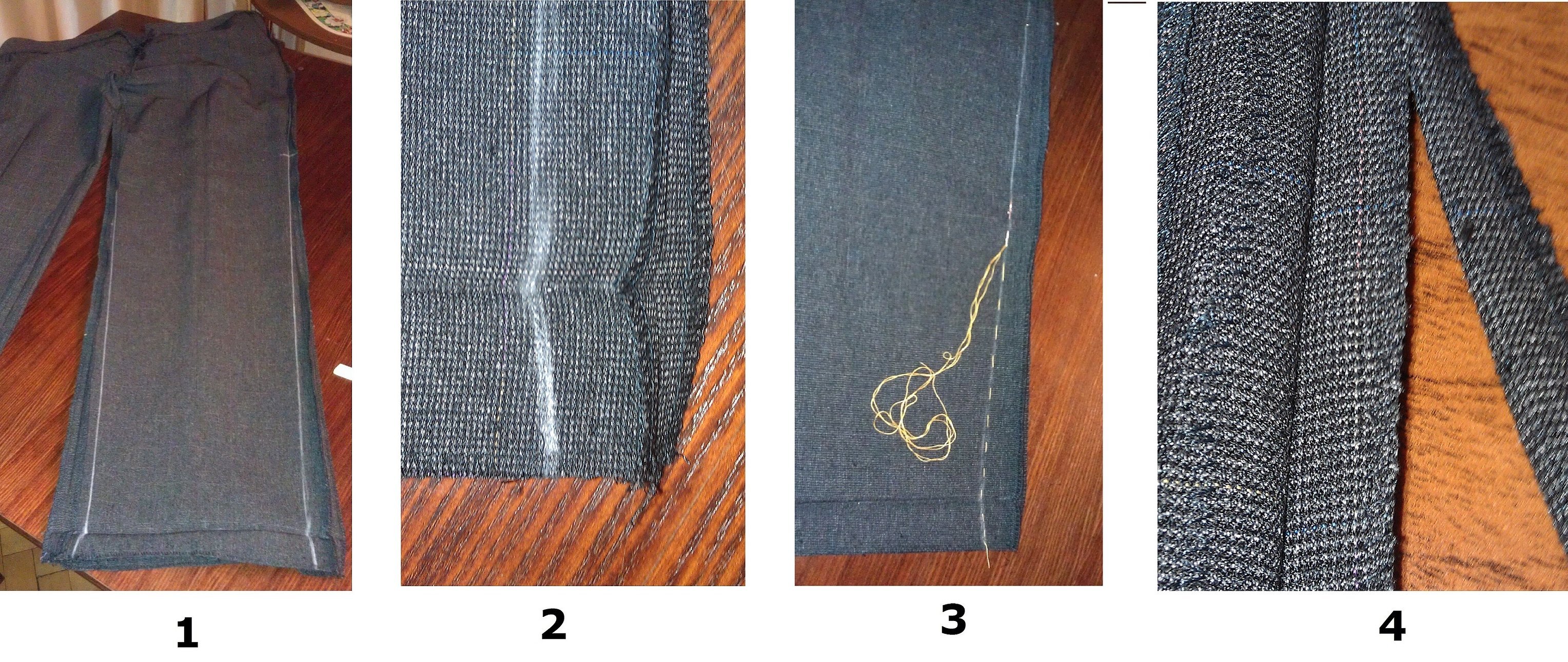
How to Taper Women's Trousers
To narrow women's trousers from the bottom, you need to determine the height from which the narrowing will begin. Then the product is turned inside out and the required width is measured with a ruler. After that, it is basted, measured and sewn. The end of the process is standard - process the cuts and steam the seams.
In fact, women's and men's trousers or jeans can be narrowed using the same pattern. If you don't need to take in the top, then galoshes are narrowed using the standard pattern.
Sewing with darts
Darts will only help if you need to quickly reduce the pants by several sizes. They can be done both in the front and in the back. It is important that the darts are at the same distance from the center and have the same length.
First you need to make a marking, then iron the dart, baste, and then stitch. This way you can reduce jeans without a machine, that is, sew them up by hand.
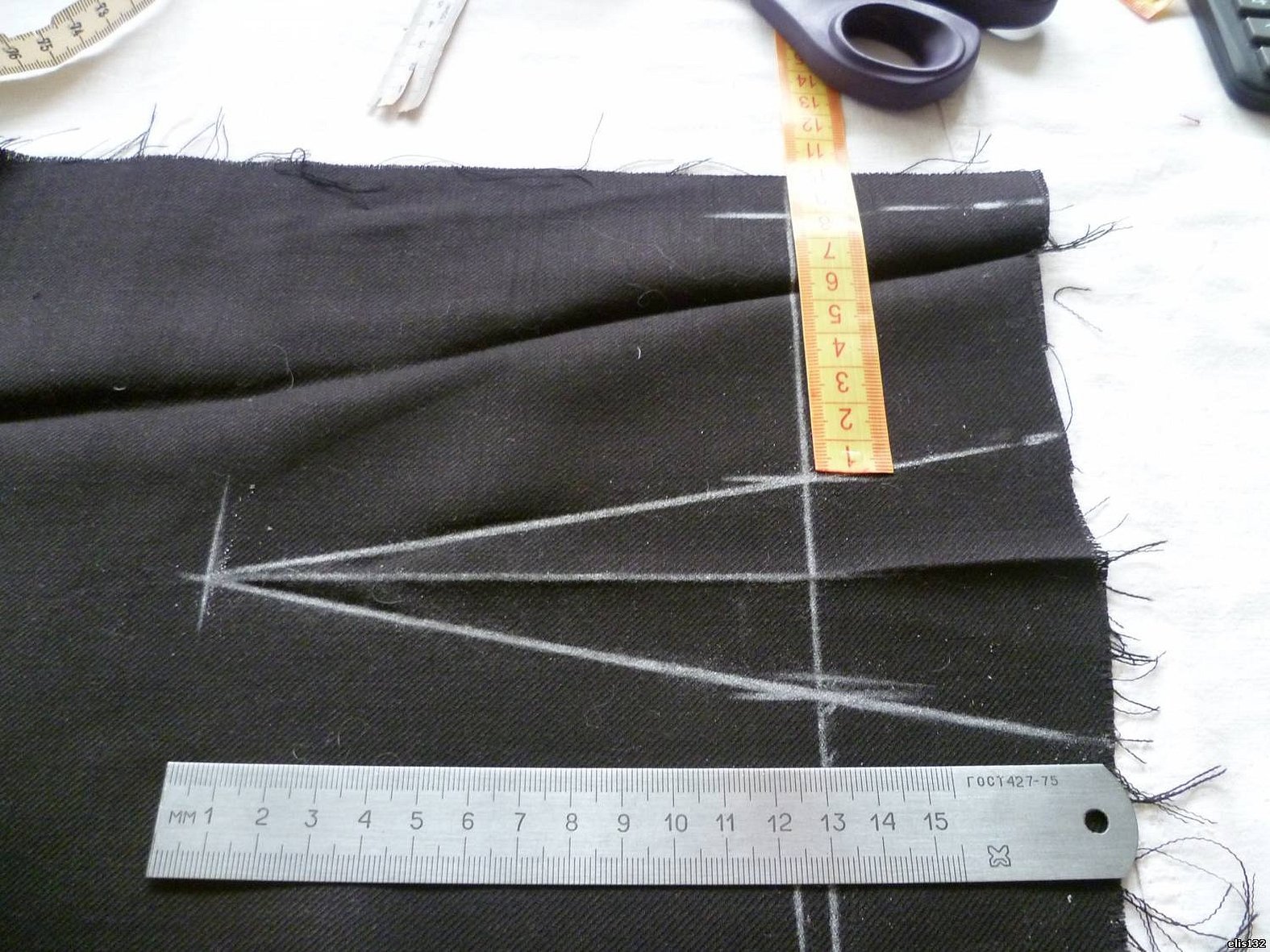
Sewing in flared trousers
A flare is a widening of the galosh from the hip or knee to the bottom. In the 21st century, a flare is practically not in trend, so everyone strives to make the pants narrowed or straight, but not flared. To take them in yourself, you need to use the method described above, in the section on sewing in pants on the sides. The work scheme is the same.
How to make jeans narrower
How to narrow trousers at home is the most common question of recent years, as skinny jeans and pants of any type with narrowing at the bottom have become fashionable. Skinny jeans are the tightest jeans that almost completely hug the figure.
To make skinny jeans from regular jeans, you need to sew them in several directions:
- Along the center seam to reduce volume in the hip area.
- Along the inseam and along the outer seam to evenly narrow the leg towards the bottom.

When is it better to re-cut?
Re-cutting is needed when trousers require not just a superficial correction, but a full alteration. That is, if they need to be changed by several sizes, the shape and fit changed. In fact, this process consists of unpicking old trousers and sewing new ones from them.
Re-cutting requires at least minimal skills in cutting and sewing, otherwise it is unlikely that you will get a sensible product. If you have no experience, it is recommended to contact a master or practice on pants that you do not mind ruining. All skills come with experience.
First, the old trousers need to be completely ripped open. This is done along the seams, it is better not to use scissors, but to use a special tool - a seam ripper.
Then you need to remove all the threads, iron the seams and mark new ones. The second option is to use a pattern, according to which new trousers will be sewn from the old material. It is not easy for a beginner to make a pattern, so it is better to use a ready-made one (download from the Internet).
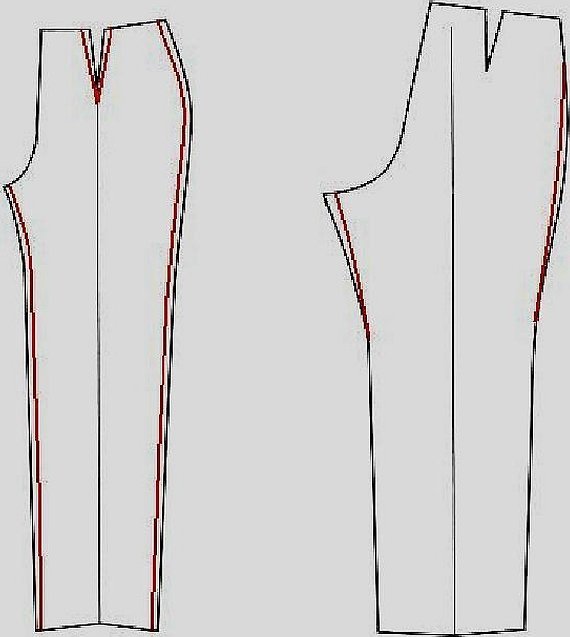
The article discusses how to take in trousers a size smaller and re-cut them if you need to significantly change the dimensions of the item. In fact, there is nothing complicated and even a beginner who has never sewn can cope with the task. It is important not to forget the well-known proverb "measure seven times, cut once."




